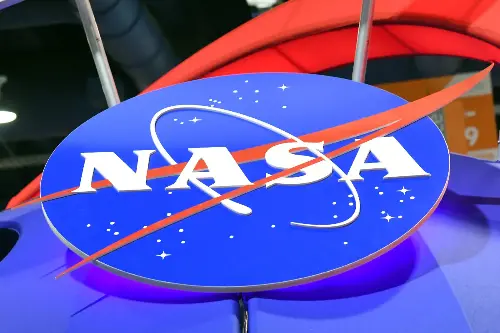
NASA is closely monitoring a bus-sized asteroid that is expected to zoom past the Earth today at a speed of around 19,193 miles per hour.
The space rock—known as "2025 HU"—is estimated to be about 37 feet across and will make its closest approach to our planet at a distance of around 784,000 miles, according to NASA's Jet Propulsion Laboratory (JPL).
2025 HU isn't the only asteroid approaching the Earth today. NASA is also tracking an airplane-sized space rock known as 2025 GD1, which is estimated to be about 86 feet across and will zip past the Earth at a distance of 991,000 miles.
Three more space rocks—building-sized "2014 HS124", plane-sided "2025 HF" and house-sized "2025 HN"—are also expected to make a close approach this week.
According to NASA, tiny asteroids impact our planet from time to time, but they usually pose no hazard to life on Earth.
Asteroids of various sizes pose different levels of threat to our planet. Rocks around 30 feet impact Earth about once in a decade, and usually only cause a very bright fireball, and a strong sonic boom, although they may break nearby windows.
Rocks measuring 160 feet only impact Earth about in 1,000 years, with the potential of causing local devastation and creating an impact crater.
Larger space rocks over 500 feet can cause deaths across metro areas and states depending on the impact location, says NASA, adding that they only hit the Earth about once in 20,000 years.
If an asteroid measuring 3,000 feet were to hit the Earth, which statistically happens about every 700,000 years, it would cause global devastation, and possibly the collapse of civilization. Rocks over six miles across only impact our planet every 100 million years, but are likely to cause mass extinctions of life.
Earlier in the year, an asteroid known as 2024 YR4 made headlines after studies predicted a 3.1 percent probability of impact in 2032, but later NASA confirmed that the risk has significantly lowered, saying that "there is no significant potential for this asteroid to impact our planet for the next century."
However, there is still a small possibility that asteroid 2024 YR4 may impact the moon in 2032, with a probability currently estimated at 1.7 percent.
"There is still a 96.2 percent chance that the asteroid will miss the Moon. In the small chance that the asteroid were to impact, it would not alter the Moon's orbit", NASA said on their website earlier in April.
Do you have a tip on a science story that Newsweek should be covering? Do you have a question about asteroids? Let us know via [email protected].
